Dear Bankless Nation,
There’s a new decentralized project in town, and I believe its reach will eventually extend far and wide.
It’s token-less, and doesn’t rely on NFTs for its infra.
So why am I talking about it here? Because in time I think this system will come to be used in tandem with many NFT projects because its use cases will be so varied.
I’m talking about the Ethereum Attestation Service, or EAS.
For today’s post let’s break down what this service is and what it means for NFTs!
-WMP
Beginner's Guide to EAS 📝
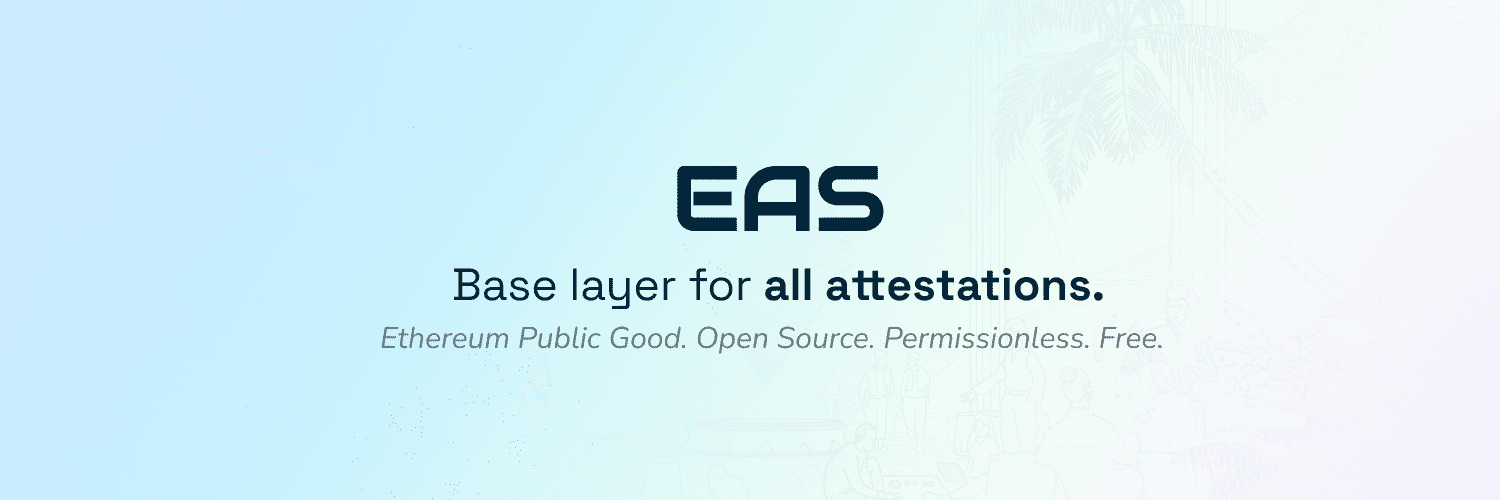
1. What EAS is
The Ethereum Attestation Service (EAS) is a decentralized system built to facilitate the creation, management, and verification of attestations.
In essence, attestations are digital signatures, i.e. digital stamps of approval, that allow people or groups to vouch for certain information.
Toward this end, EAS uses a set of smart contracts on Ethereum to provide a structured and standardized approach to these attestations, ensuring their authenticity and integrity.
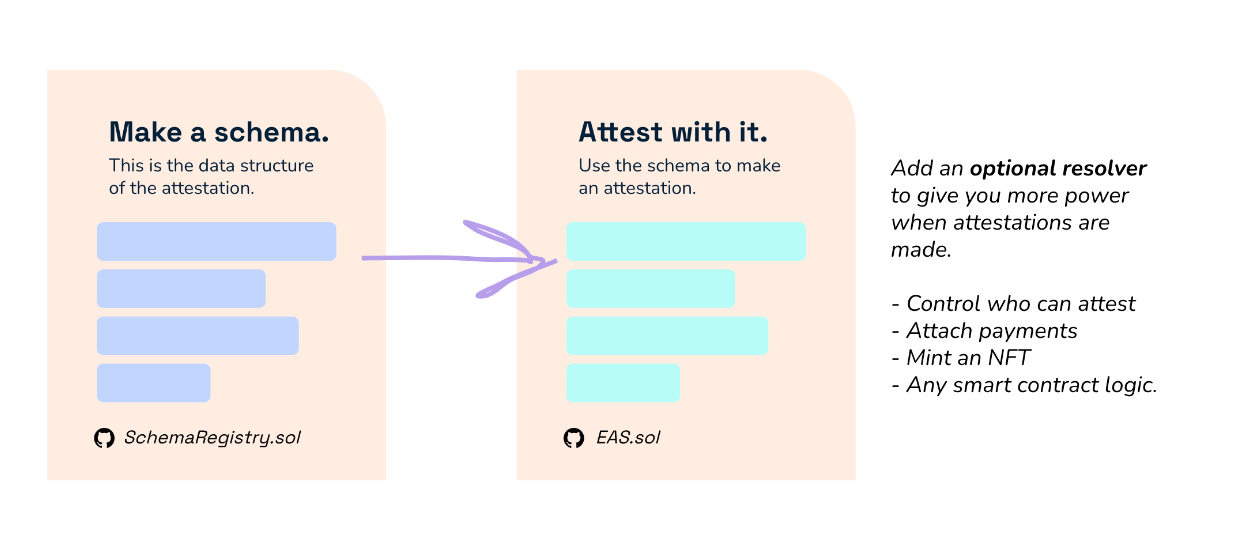
2. What EAS is for
EAS is designed to instill trust in online interactions.
In our digital age, where data is omnipresent and deepfakes and scams are on the rise, ensuring authenticity and accuracy is quickly becoming essential.
Accordingly, EAS offers a mechanism to verify data, establish its authenticity, and ensure its integrity on Ethereum, which in turn also makes this data composable (i.e. web3 apps can use as building blocks) and openly available to the public.
At a fundamental level, then, EAS is ideal for verifying digital identities — i.e. ensuring online profiles and personas are genuine — and verifying content authenticity — i.e. confirming that content, be it an article, image, or video, is original and not counterfeit or plagiarized.

3. How EAS works
The EAS functions via two smart contracts, the first of which is focused on schema registration and the second of which is focused on attestation creation.
Simply put, schemas act as blueprints, defining the format and structure of the data to be attested. Once a schema is in place, data is structured accordingly, signed to produce a digital signature, and then submitted to EAS. After verification against the schema, the attestation is recorded on the blockchain.
Notably, EAS accommodates both onchain and offchain attestations. Onchain attestations are directly logged on the Ethereum blockchain, offering robust security and immutability, and is ideal for data necessitating strong trust assurances.
Conversely, offchain attestations, while anchored to the blockchain, are stored externally, e.g. via IPFS. This approach is good for large data sets or when privacy considerations require offchain storage. Regardless of the method here, though, EAS ensures an attestation's integrity and authenticity.

4. Examples of projects using EAS today
Optimism has been one of the foremost early adopters of EAS tech. For example, not only has the layer-two (L2) scaling solution used the system to underpin its own AttestationStation service, but it also now predeploys the EAS contracts to new chains built with OP Stack tech, e.g. Base.
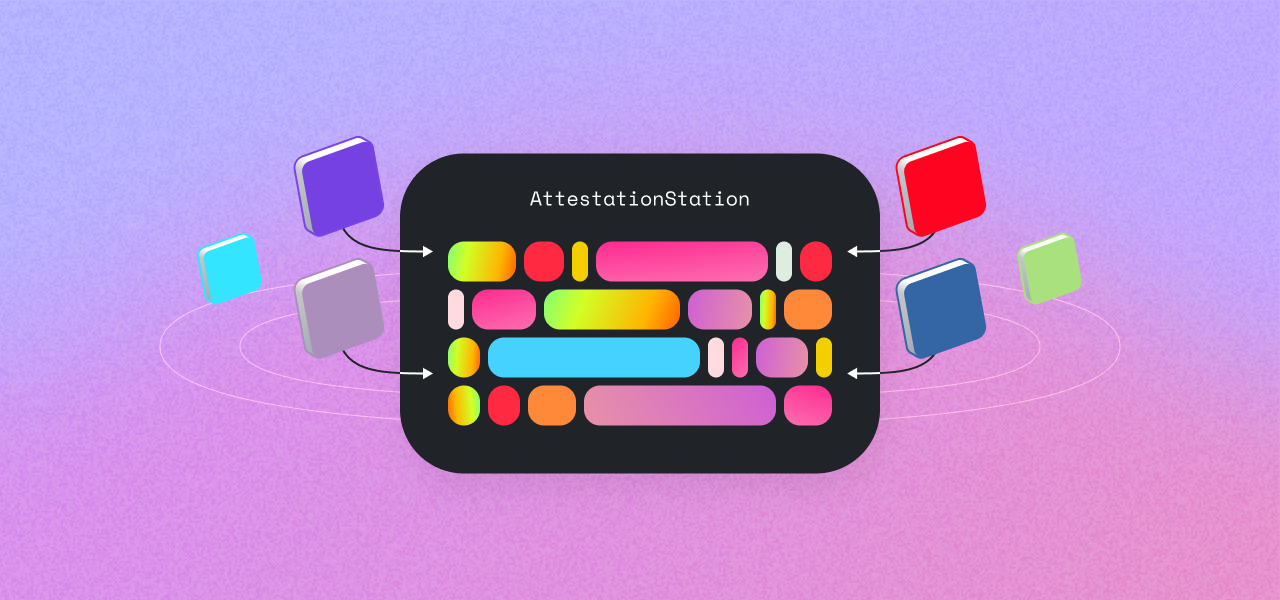
Additionally, decentralized regen grants and bounties platform Gitcoin uses EAS for onchain stamping in its Gitcoin Passport identity service, which verifies user achievements and participation.
5. General EAS use cases
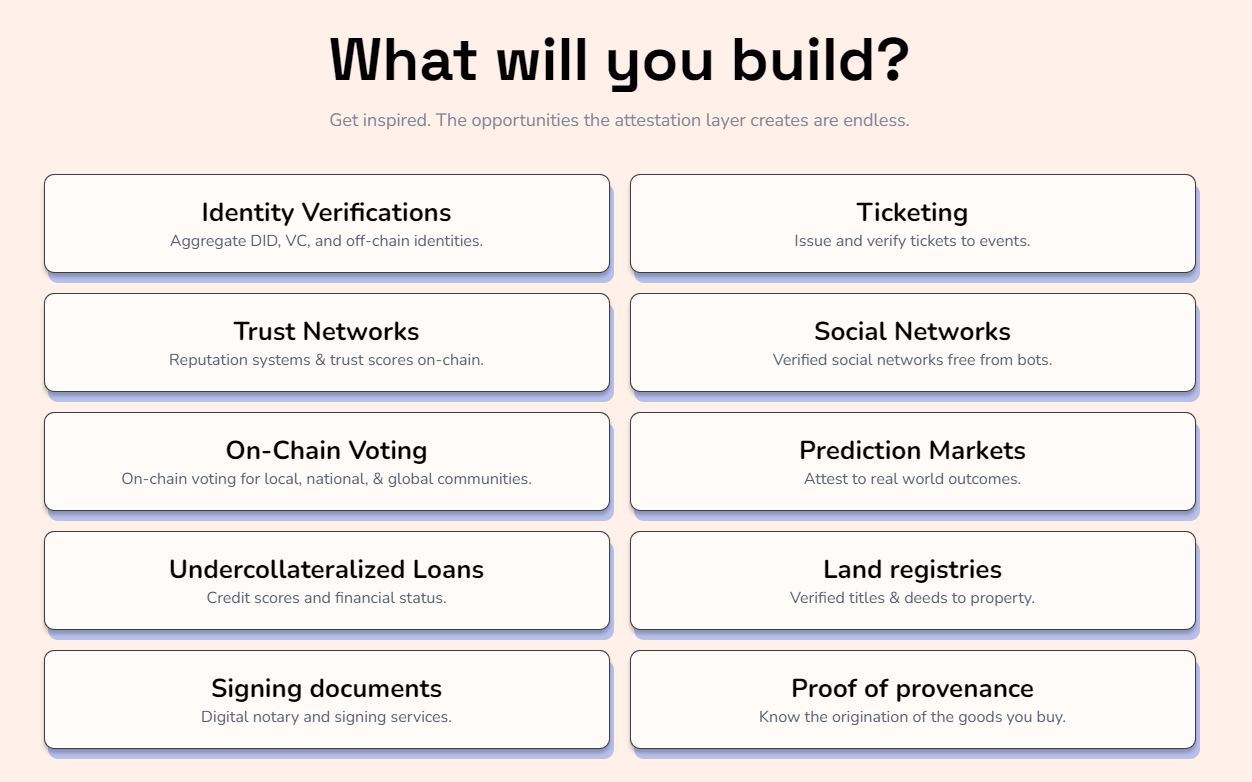
The EAS can address a myriad of challenges across various sectors.
To be sure, one low-hanging fruit here is the verification of digital credentials, ranging from educational degrees to professional certifications, for which EAS offers a decentralized solution for authentication.
Beyond credentials, though, EAS can also play a pivotal role in roles and authorizations within groups and organizations, as the service can offer a tamper-proof mechanism to confirm that individuals possess the necessary permissions and access rights.
Additionally, and what I’m perhaps most interested in personally, is how EAS can be used to establish verifiable reputation systems on online platforms and marketplaces. Through these systems, users can interact with peers they don’t know yet with trust based on past attested activities.
6. EAS and NFTs
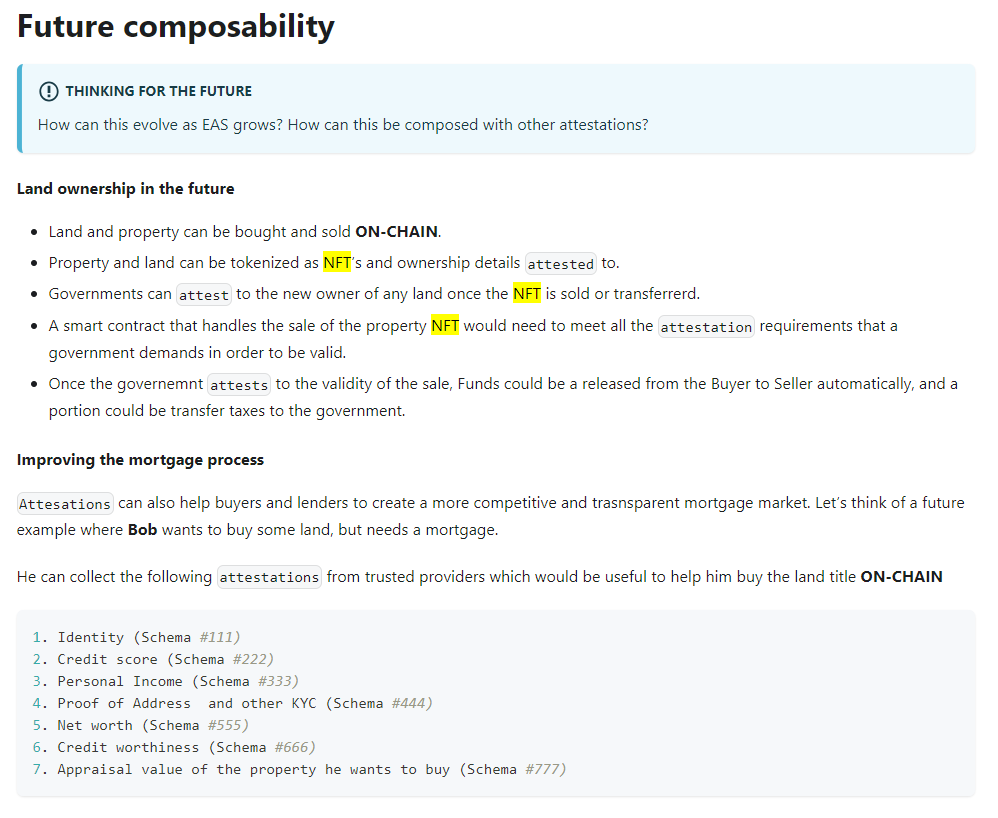
While NFTs represent a big advance for digital assets, their inherent transferability and other unique aspects make them less suitable for particular use cases like credentials where EAS can shine.
Again, unlike tokens that represent digital assets, EAS attestations serve as digital signatures on structured information. Their primary purpose is to enhance trust, validation, and the interoperability of digital data. That said, EAS and NFTs, though distinct, can absolutely be highly complementary because NFTs are and always will be surrounded by data that could benefit from attestations.
For instance, you can set up a schema with a resolver contract so that, say, NFTs are minted to participants of an event as certain attestation criteria are met.
But beyond this, the possibilities here are limited only by our imaginations. Artists can use EAS to attest to the creation process of their NFTs, ensuring authenticity of onchain memorabilia components made along the way. EAS can also facilitate decentralized licensing systems for NFT IP, or even facilitate NFT-based land registries to ensure the authenticity and transferability of the land parcels involved.
Earlier I had mentioned I was interested in EAS and reputation systems and that’s because I used to work with one up close. When I was at JPG, an NFT curation protocol, we caked a curatorial reputation system, JXPG, right into our Canonicon NFT. The problem? It was nonstandardized and siloed to that NFT collection.
In contrast, EAS offers a straightforward way to build a reputation system around any NFT project and in a standardized way that anyone can look to, enjoy composability from, and so forth. That’s powerful and one compelling avenue to convert NFTs from “horizontal” simple assets that you just hold into “vertical” assets that can track your achievements over time!


